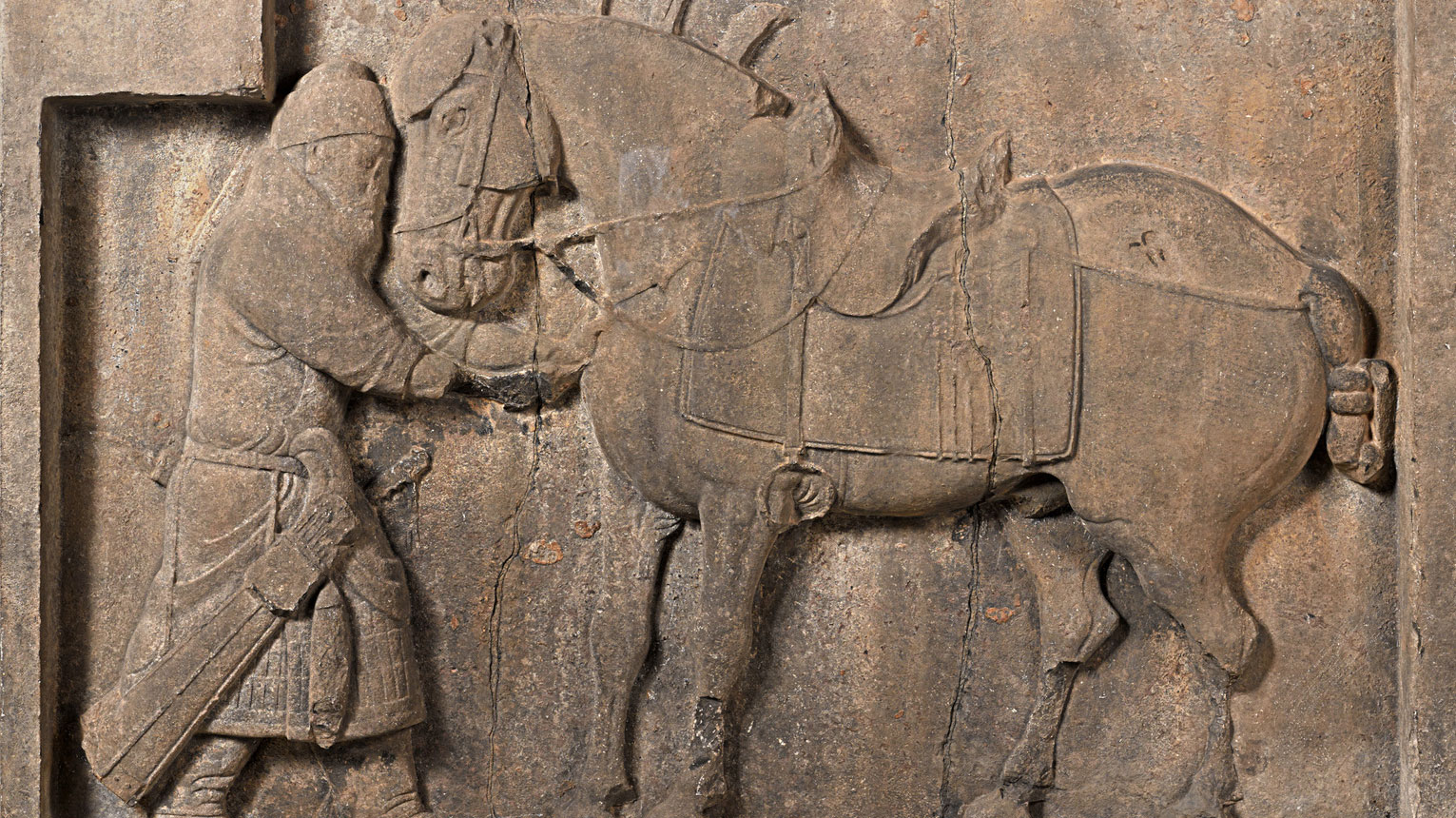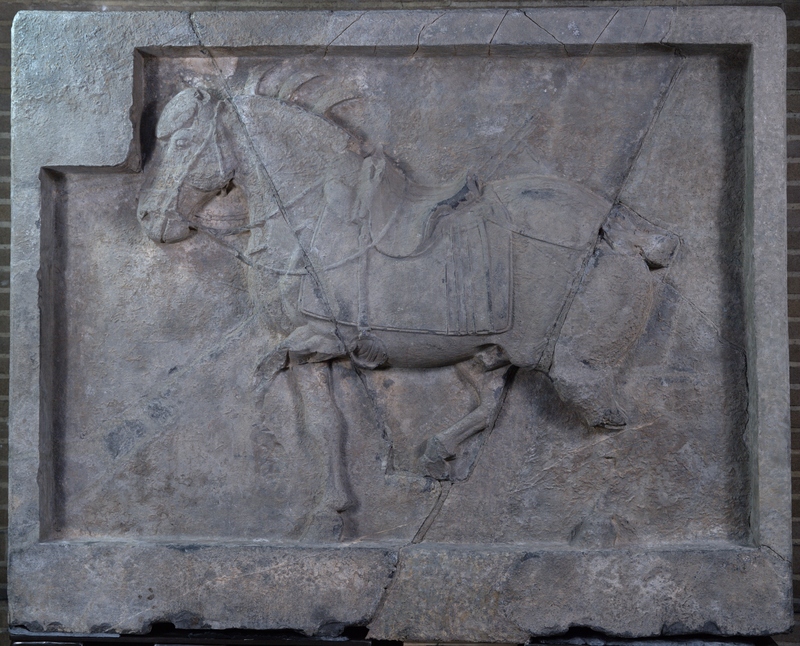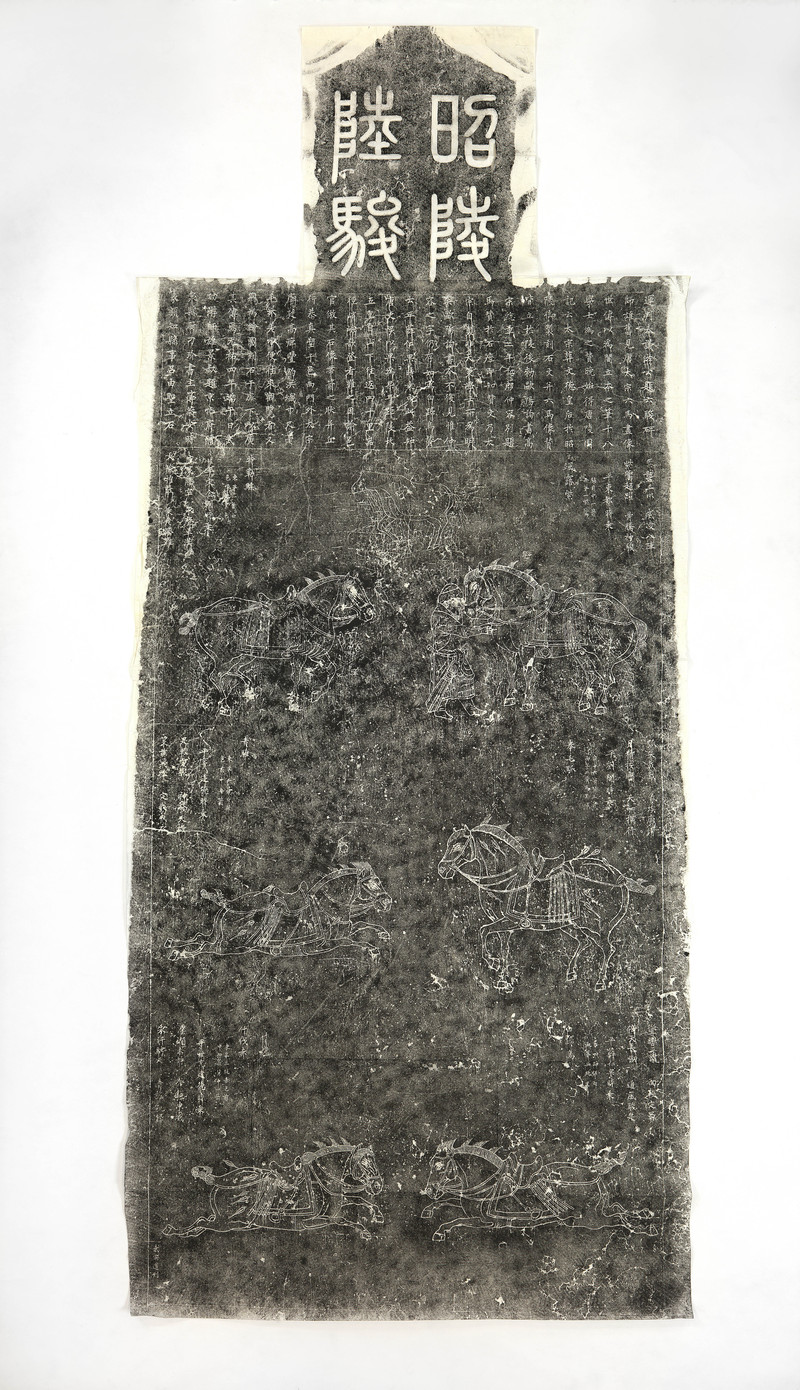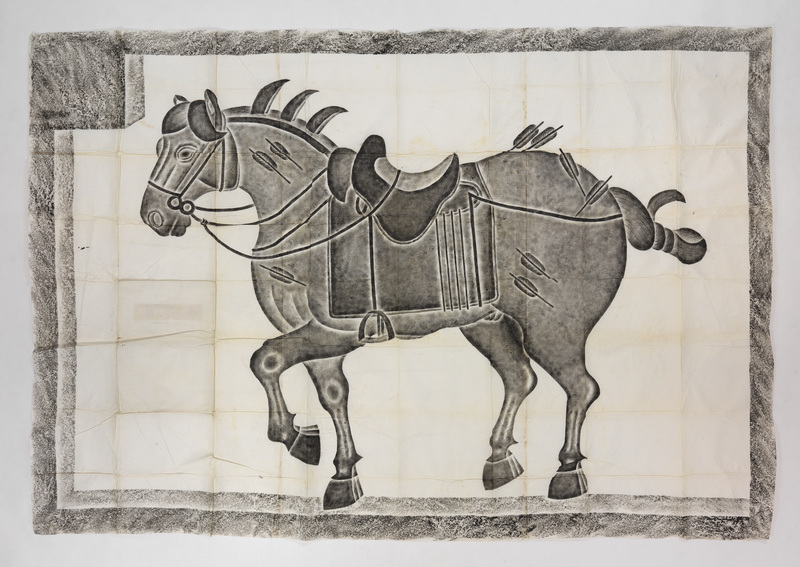Taizong Horses


Two stone horse reliefs in the Asian collection are considered by many to be among the most important examples of Chinese sculpture outside of China. They were originally commissioned by Emperor Taizong, the second ruler of the Tang Dynasty for his own tomb. In 636 CE, Emperor Taizong selected Mount Jiuzong near present day Xi’an to serve as the site for his mausoleum, a sprawling complex named Zhaoling. Covering 20,000 hectares, Zhaoling comprises the primary tomb, 194 auxiliary burials, above-ground funerary architecture and groups of stone sculpture. The six horse reliefs flanking Taizong’s tomb at Zhaoling are the most well-known. Two reliefs are at the Penn Museum and the other four now reside in the Stele Forest Museum (Beilin Bowuguan) in Xi’an. Each one depicts an actual horse that was ridden in a battle that helped the Emperor unite China.
The first relief depicts the horse Saluzi, whose name means ‘Autumn Dew,’ and who was ridden in 621 CE during the siege of the eastern capital Luoyang. When the horse was hit by an arrow, General Qiu Xinggong came to the rescue. The relief depicts Qiu pulling the arrow out of Saluzi who is stoically bearing the pain. This relief, the only one to include a man, is a specific depiction of the event. The second relief is the horse Quanmaogua, whose name indicates a saffron-yellow horse with a wavy coat of hair. Quanmaogua was ridden in battle against Liu Heita in 622 CE. The horse is shown walking briskly forward with rare spirit and animation despite grievous wounds sustained from nine arrows—six from the front and three from the back. The two horses belong to the original set of three on the west side of Taizong’s tomb, which were placed symmetrically to the three horses on the east side of the tomb.
Secrets of the Silk Road: Tang Taizong's Noble Steeds
TAn introduction to the Penn Museum's famous Tang dynasty horse sculptures with the University of Pennsylvania's East Asian Languages and Cultures graduate student, Sarah Laursen.

Emperor Taizong
After assisting his father in founding the Tang dynasty in 618 CE, the future Taizong Emperor, then styled the Prince Qin, continued battling against tough contenders to secure the borders of China. Several years later, he wiped out all the major rivals and returned triumphantly, but was locked in an intense rivalry with his elder brother, the Crown Prince. The power struggle became one of life and death, and Taizong launched a coup, killing the Crown Prince and forcing his father to yield the throne. In 626 CE, he became the second Tang emperor, and ruled for 23 years, inaugurating one of the most glorious reigns in Chinese history and laying a foundation for a prosperous Tang Empire that would endure almost 300 years. The horses stood at the Mausoleum for over 1,200 years, venerated by imperial and common people alike. They continue to hold a special place in the hearts of the Chinese people to this day.
Cultural Influence, Historical Significance, and Artistic Inspiration
While the reliefs come from China, elements of the horses’ mane, tail, saddle, armor, bow, and arrows, all show strong nomadic influences and can be traced to ancient West Asian sources, particularly Sasanian rock reliefs in the region of modern-day Iran. The appearance of crenellated mane and tail decoration, the introduction of the saddle and stirrup, and the adoption of nomadic costume and weapons for fighting on horseback can only be interpreted as the impact of a series of historical events spreading from west to east.
The horses and the reliefs themselves have inspired artists throughout time to memorialize them in different media. This includes traditional mediums such as stele, paintings, and poems, but also more modern inventions like stamps, souvenir handkerchiefs, and folk crafts. The Penn Museum has a set of rubbings which were made by blowing ink through a tube onto stencils and paper. While they are often referred to as rubbings, they were not actually created from the reliefs themselves. Many variations of these types of rubbings exists, from life-size renderings to smaller versions with inscriptions.
3D Model
Online Resources
Expedition Magazine
Other Videos
Dissertation
Conservation of the Taizong Horses (Penn Museum Blog)






